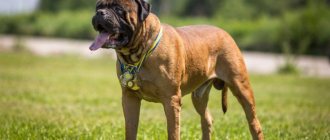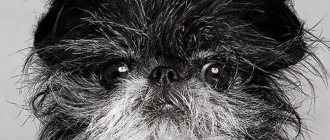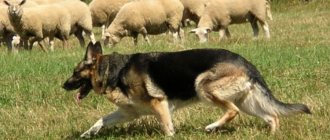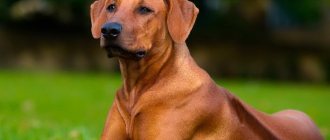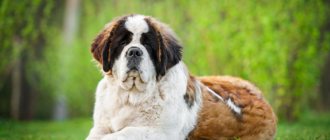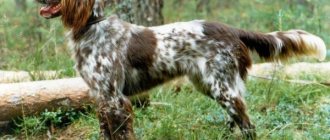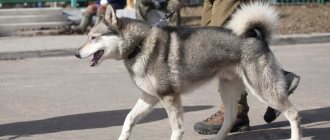Try taking a virtual walk with us through the grasslands, jungles and mountains of the world in hopes of seeing these stunning animals with your own eyes. A leisurely immersion in the atmosphere of wild nature with the ensuing beauty, danger and splendor will allow you to feel like a part of nature itself. As you follow the lines of descriptions of some of the wild dog species that span almost the entire globe, you will learn how diverse and vast our world is. Most of the animals below are predators and are forced to hunt for their food, but you will definitely see their resemblance to the pets that are members of our families.
How did people domesticate the dog?
The domestication of the dog occurred about 15 thousand years ago, and the process itself took several centuries. Today it is difficult to imagine that once upon a time all man’s best friends were simply called wild dogs. Man did not even think about domestication. It all happened completely by accident.
Wolves, jackals and coyotes have had no fear of humans since time immemorial. It was easier for them to exist next to each other, but in separate flocks. After their stops, people left scraps that wild dogs feasted on, and the dogs, in turn, were useful to humans because they sensed danger perfectly and began to howl. That's how they lived. People moved from place to place, and the wolves followed them, remaining unnoticed.
The rarest domestic breeds in the world
Which dogs are rare around the world? Those that have lost their purpose as working breeds and those that are the pride of any area. But first things first.
Turkish Pointer
In Turkish the breed is called Catalburun. She has a remarkable feature that makes her unique throughout the world - her forked nose. This breed is almost 400 years old, they are excellent hunters and watchdogs.
They have a calm, even temperament and live well in an apartment. Unfortunately, it is not recognized by the FCI - the International Cynological Federation, so it is difficult to get them and you will have to refuse exhibitions.
It is this lack of recognition that has made this fine breed of hunting dog rare. Residents of Turkey cannot independently spread pointers around the world, so they remain only in Turkey and there are fewer and fewer of them every year.
For all other breeds in the world, a split nose is a serious defect and the dog will be sick. And here is such a stable and peculiar mutation.
Moody
Homeland is Hungary, popularly known as the Hungarian Shepherd. A charming, fluffy and unpretentious dog about knee length. Perfect obedience, a wonderful shepherd, a hunter - a dream, not a dog. It’s a pity that she needs physical activity from 5 hours a day, otherwise she would be on every sofa in the world.
Thai Ridgeback
It is already quite popular in Russia, but is still among the ten rarest in the world. Medium size, calm temperament and absolutely independent.
Training? Mistress, I better know when I want to sit down! But their extraordinary intelligence makes these four-legged animals completely unproblematic for keeping in an apartment.
On private property they will catch birds, rats and cats. Ridgebacks are a native breed and have dingo blood in them. Maybe that's why they couldn't find millions of lovers around the world?
Norwegian Lundehund
A natural seabird hunter can hardly survive the ban on fishing. And, unfortunately, the dog is more of a working dog than a decorative one. This means that her beauty is not for everyone. Oh, what a pity! Now she is a sweet little dog with extraordinary intelligence and endurance.
Tibetan mastiff
An incredible breed in its gigantism. They did not take root due to their incredible size. Firstly, they are difficult to maintain. Food consumption, time for grooming and physical activity... a good breeder will not sell such a dog to an apartment, the dog simply will not survive there.
Secondly, difficulties in breeding. It is rare to find two Tibetans in the same city, and they also happen to be of different genders - incredible luck.
And then, the puppies are already a month old and the size of a good spaniel, and if there are 8 of them and everyone wants to eat... the cost of the puppies is such that they are also one of the most expensive breeds in the world. This is such a unique dog.
African Greyhound
Azawakh, if in her native language. One of the oldest formed rocks existing on the planet. It was born in the harsh African deserts and, unfortunately, could not spread throughout the world.
Maybe it’s the great competition between greyhounds, or maybe it’s the possessive nature of the local sheikhs, for whom a rare dog is a symbol of wealth.
Otterhound
British hunter and fisherman. The breed is still not recognized, but the British are very keen on this. A classic hunter who cannot imagine her life without a good race and warm meat.
It is not suitable for city life or requires incredible mobility and energy of the owner: the dog requires a lot of running and mental stress.
Stabihun
Dutch hunter. The name translates as “standing nearby” and the dog actually takes a characteristic hunting stance. The dog is small, fluffy and very affectionate.
In addition, her hunting roots do not allow her to sit still. She will constantly bring game, catch insects and run, run, run.
Chinook
Surprisingly, one of the most ancient breeds is not recognized by any club. This is a sled dog capable of outpacing the popular huskies and huskies in speed and endurance. Maybe the canine federations don’t want competition?
Healer
Perpetual motion machine? Well, not quite eternal, after all, the life of a dog is limited to 15-20 years. But all these years, the healer will stop only to eat and sleep a couple of hours a day.
And don’t look at its modest size; in terms of endurance, adaptability and speed, it rivals even some cars.
Closer to the fire
As the cold weather approached, the life of wild dogs became more and more difficult, and they came closer to human sites. Once, during the most severe frosts, a wolf pack came so close to the people that they could throw bones to them. The dogs were basking nearby, gnawing on tasty leftovers from food, and therefore they had no desire to eat people. Wild dogs and modern domestic dogs are the smartest creatures. If they understand that their life depends on a person, they will never attack him.
Many years later. People and wolves were accustomed to living side by side, but no one dared to come closer to each other. But everything begins someday. One day, an inquisitive wolf cub made his way to people, and the man did not chase him away. He began to play with it. Century after century passed, and one day the wolves forgot all their habits as predators, began to hunt with people, and protect their huts.
Azawakh
- Height: from 60 to 74 cm
- Weight: from 15 to 25 kg
- Life expectancy: 10 to 12 years
- Average cost: from 2000 to 2500 dollars
Native to the West African countries of Burkina Faso, Mali and Niger, the Azawakh only arrived in Europe in the 1970s . These dogs were highly valued by nomads and were treated like family members. The Azawakhs took their job of protecting settlements and hunting game (such as gazelles and wild boars) very seriously.
Although the breed may look like a greyhound, it actually has much longer legs and is slightly slimmer (if that's even possible!). The good-natured and gentle Azawakh needs daily positive mental and physical stimulation. This breed responds best to reward-based training.
Is it possible to tame a wolf?
A wolf is also a dog, only a wild one. It is almost impossible to tame him, even by adopting a small wolf cub. He will grow up to become a great predator. It’s not a fact that it will rush and eat its owner, but it can injure. In order to get a domestic wolf, it will take many years, or even centuries, for the predators to live nearby, just as they did many thousands of years ago, to stop being afraid and get used to people.
Modern wolves are descendants of ancient wild dogs that have not found their human “pack” and at the genetic level they have no love for people.
Coton de Tulear
- Height: from 22 to 30 cm
- Weight: from 3.5 to 6 kg
- Life expectancy: 14 to 16 years
- Average cost: from 600 to 2100 dollars
Madagascar is not just an exclusive resort for various species of lemurs, it is also home to the pampered Coton de Tulear. Although the Coton de Tulear looks a bit like a Maltese, this tiny breed is beautiful and unique in its own way. Named after their place of origin (Tulear, Madagascar), these dogs are renowned for their fluffy, cotton-like fur that is low-shedding and (mostly!) hypoallergenic.
Friendly, playful and easy to care for, these dogs are ideal for families with children. And with a long life expectancy (up to 16 years!), you'll have many years to spend together.
Dingo: wild dog or feral ancestor of domestic dogs?
Scientists believe that wild dogs, dingoes, are the oldest of all dogs. There has been much debate about how dingoes came to Australia. Someone argued that wild dingo dogs were brought there by people from eastern countries, since a fossilized skull belonging to the oldest dog was found in Asia. As a result, scientists came to the conclusion that dingoes simply moved to Australia overland when the continents had not yet separated.
Outwardly, wild dingoes resemble domestic ones. They are very difficult to distinguish. Scientists believe that the dingo is the ancestor of the already domesticated dog. This conclusion was made due to the structure of the jaws and teeth, which are not as massive as those of a wolf or coyote.
Rare breeds in Russia
In some countries, the rarity or widespread nature of a breed is determined by both its natural qualities and fashion. Huskies are not ideal dogs for apartments, but they are fashionable and there are hundreds of Huskies around the city. So I'll limit myself to names and cute pictures of dogs.
Alaskan Klee Kai
Can you imagine a husky the size of a spitz? Husky energy in a convivial package.
American Hairless Terrier
An ordinary terrier, but fur is not included in the package. In our continental climate, dogs live well. Except that in winter we have to buy clothes for them too.
Affenpinscher
From the point of view of a dog breeder, it is a relative of the griffin. From a human point of view, it’s Kuzya’s brownie.
Basenji
She is an African non-barking dog. By the way, they have not changed in appearance for more than 1000 years.
Bedlington Terrier
For photo shoots with sheep, if there are no sheep?
Beauceron
Shepherd with French roots and a serious temper.
Tosa Inu
Not at all related to Shibe, just Inu means dog.
Pharaoh Hound
A few more natives from Africa in this sad autumn.
Mastino Neapolitan
Another four-legged beauty.
Prague rat
Something small for a change.
How do dingoes live?
Wild dingoes prefer to live in groups, which include from 4 to 15 dogs. Every pack has a dominant couple that holds all the power in their paws. The life of a dingo is little different from that of a wolf. They hunt and divide the prey equally. Sometimes there is a change of power in packs. When the dominant pair becomes weak, it is overthrown from the “throne” by younger and stronger individuals.
You can tame a dingo, unlike a wolf. The dog should be trained from puppyhood, and then there will be complete mutual understanding. A domesticated dingo is very loyal. This dog will never accept another owner.
Rhodesian Ridgeback
- Height: from 61 to 69 cm
- Weight: from 29 to 41 kg
- Life expectancy: 10 to 12 years
- Average cost: from 1000 to 1800 dollars
Experienced dog owners who want a loyal and affectionate hunting and running companion will love the Rhodesian Ridgeback. Strong and playful, this dog was originally bred to hunt large game in Africa (including lions), which is why it was formerly called the African Lion Hound .
They are considered intelligent and fairly obedient companions, but it is important to socialize and train them as early as possible as Rhodesian Ridgebacks are renowned for their willfulness and stubbornness. Ideal for outdoor activities, the Rhodesian Ridgeback makes an ideal partner for joggers or hikers.
New Guinea singing dog
Wild dogs living in New Guinea received this name because of their unique vocal characteristics. They practically cannot bark, they only howl, and this sound is far from the one that wolves make. It is more like the songs of strange birds.
A distinctive feature of the singing dog is its incredible agility, obtained due to its unique physique. The spine of this dog is flexible, like that of a cat, and its paws are long with sharp claws. She can even climb a tree! Externally, the singing dog is similar to a dingo, but is smaller in size and has more developed fangs.
The New Guinea dog is especially friendly with people. It can be tamed, but the population of the species is so small that it is practically never seen anymore. It is believed that the dogs are almost extinct, and they cannot be saved.
Coyote
It is the closest relative of the red wolf and gray wolf. Most often found in North America, but has also been seen in parts of Central America and Mexico. It feeds on countless prey, including smaller animals such as rodents, fish and birds, and even rabbits and deer.
Jewish monetary wisdom: making money on information is a magical weapon in business
Russians can be rewarded financially if they restore forests
The UN spoke about the influence of weather on the spread of Covid
Wild dogs of Africa
Hyena-like dogs live on this hot continent. They are very interesting and remarkable, as they live in real dog cities. There can be more than a hundred individuals in one flock, and all obey one leader.
These animals are very fast and resilient, and during the hunt, the field they are on resembles a battlefield. No one can escape such a pack!
The leader of the pack has a female - alpha, who cannot be contradicted by other representatives of the huge family of wild dogs. During her pregnancy, all the dogs bring her food, and then food for the puppies. Apart from the alpha, no one in the pack has the right to have offspring. Such females are deprived of food and the puppies are killed.
A photo of wild dogs belonging to the hyena species is provided above. It shows that the name was not given in vain. The predator only vaguely resembles a hyena. He looks more like a feral house dog.
What is a rare breed
An obvious question, isn't it? Rare means rarely found. And here we need clarification. Dogs may be rare:
- In the world.
- In Russia.
- Have rare representatives, for example in color.
- Individuals and breeding lines where dogs do not meet any standard in the description of the breed and are therefore rare.
And separately:
- Rare wild breeds.
- Rare domestic breeds.
First, let's talk about domestic dogs. Rare colors and other features within one breed. Each breed has its own rare color, and sometimes it is not rare, but defective. For example, blue Labrador, along with this color, carries a huge number of diseases.
The brindle color is considered rare, while for many breeds the merle color is considered rare. When choosing a breed, you need to remember that a rare color should be included in the breed standard and that the puppies will a priori be expensive. If one of the requirements is not met, there is a high chance of getting various diseases.
Greyhound
- Height: from 68 to 76 cm
- Weight: from 26 to 40 kg
- Life expectancy: 10 to 14 years
- Average cost: from 1500 to 2500 dollars
This classic greyhound has Egyptian and Greek roots. The graceful greyhound is a favorite of kings and presidents. These hunting dogs enjoy long walks and chasing squirrels, which often attract their attention in parks. While humans have a visual range of about 180 degrees, greyhounds boast a 270-degree visual range . While walking, their wide-set eyes are always looking out for potential prey; even at a distance of 800 meters, a keen-eyed greyhound will notice a lurking animal!
Fun fact: The greyhound is the only dog mentioned in the English version of the King James Version of the Bible (Proverbs 30:29-31).
Greyhounds are often called "cat dogs" due to their regal, proud demeanor. On the other hand, these greyhounds have a gentle and kind disposition, are easy to train and, of course, are looking for a reliable running partner.
Features of duck hunting
Duck hunting is common among hunters of all levels. But you also need to know the peculiarities of this fishery. The spring duck hunting period lasts about two weeks, after which you can hunt only from mid-August to the end of October. In spring you can only hunt drakes. This can be done in several ways - the first is approach hunting. The hunter looks for where the ducks live and, with the help of the dog, raises the game, shoots it, and his faithful assistant brings the prey.
Duck hunting from a porch differs only in that the hunter waits for the game, waiting in the boat. There must be experienced dogs here, because too old or young dogs, experiencing the excitement of the hunt, may not calculate their strength and drown.
Migration hunting includes feeding birds: in the evening, ducks fly to the field to feed, and in the morning they return to their pond. If you shoot a duck in a field, then most likely the flock will change its feeding location and they will need to be tracked again, so you need to shoot the game in the middle of the field and the pond. Here the dog will help find wounded animals and bring back prey.
There are also other types of waterfowl hunting: shooting from a hut or hunting with a decoy duck, but in such cases the use of dogs is infrequent, because here you need to have patience and not every one of them is able to wait and not scare the duck ahead of time.
A little history
Knowledge about the types of hunting dogs was first recorded in the manuscripts of the ancient Romans. They respected their enormous patience, sense of smell and flair, admired their unexpected lightning-fast throws and victories over the game after tracking it down.
But the Romans created animals to suit their needs, the goal of Rome was to use protective qualities. The population of neighboring European countries, on the contrary, specially bred dogs, using animal hunting as their basis. Thus, ancient scientists and breeders, observing for a long time the processes of maturation from puppies to mature individuals, selected predatory catchers, drawing up their current classification and division. European dogs showed fine intelligence, speed, and mobility.



